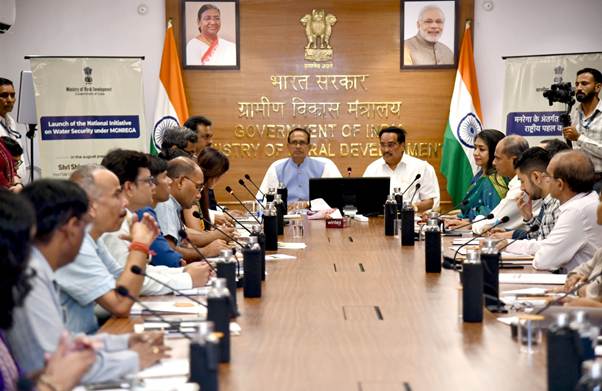
India is facing a severe groundwater crisis, with over 11% of rural blocks categorized as “over-exploited” by the Central Ground Water Board (CGWB, 2024). To address this, the Union Government has amended Schedule-I of the Mahatma Gandhi National Rural Employment Guarantee Act (MGNREGA), 2005, mandating a fixed share of expenditure on water conservation, harvesting, and related works. This aligns with the broader goal of ensuring long-term water security and sustainable livelihoods in rural India.
Key Provisions
- Mandatory Expenditure Quota (as per CGWB classification):
- Over-exploited & Critical blocks → 65% spending on water-related works
- Semi-critical blocks → 40% spending
- Safe blocks → 30% spending
- Definitions (Groundwater Extraction Stage):
- Over-exploited: >100% extraction (more water withdrawn than recharged).
- Critical: 90–100% extraction.
- Semi-critical: 70–90% extraction.
- Safe: ≤70% extraction.
- Financial Impact:
- Around ₹35,000 crore will now be earmarked for water conservation under NREGS.
- Institutional Mechanism:
- District Programme Coordinators/Programme Officers must ensure compliance.
- Legal backing provided through amendments to Schedule-I of MGNREGA.
Significance and Potential Impact
- Water Security: Prioritizing water works in water-stressed regions.
- Employment Generation: Sustainable job creation for rural workers.
- Agricultural Stability: Improved irrigation through groundwater recharge.
- Alignment with SDGs: Directly supports SDG 6 (Clean Water & Sanitation) and SDG 15 (Life on Land).
- Policy Innovation: Strengthens integrated water resource management.
Challenges
- Limited technical expertise at the grassroots.
- Ensuring effective execution of water works.
- Monitoring and transparency issues.
- Lack of awareness among rural communities about water management.
Conclusion
This policy shift makes MGNREGA a powerful instrument to tackle India’s groundwater depletion while ensuring rural employment and livelihood security. If implemented effectively with strong institutional support, technical assistance, and community participation, it can contribute significantly to long-term water security and sustainable rural development.
